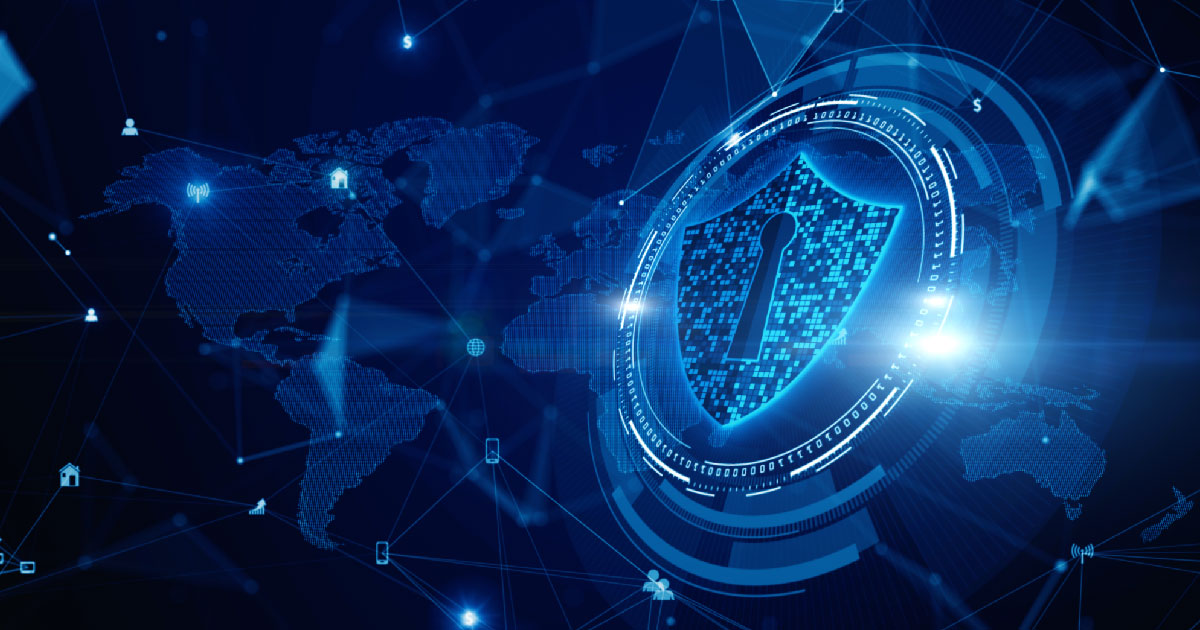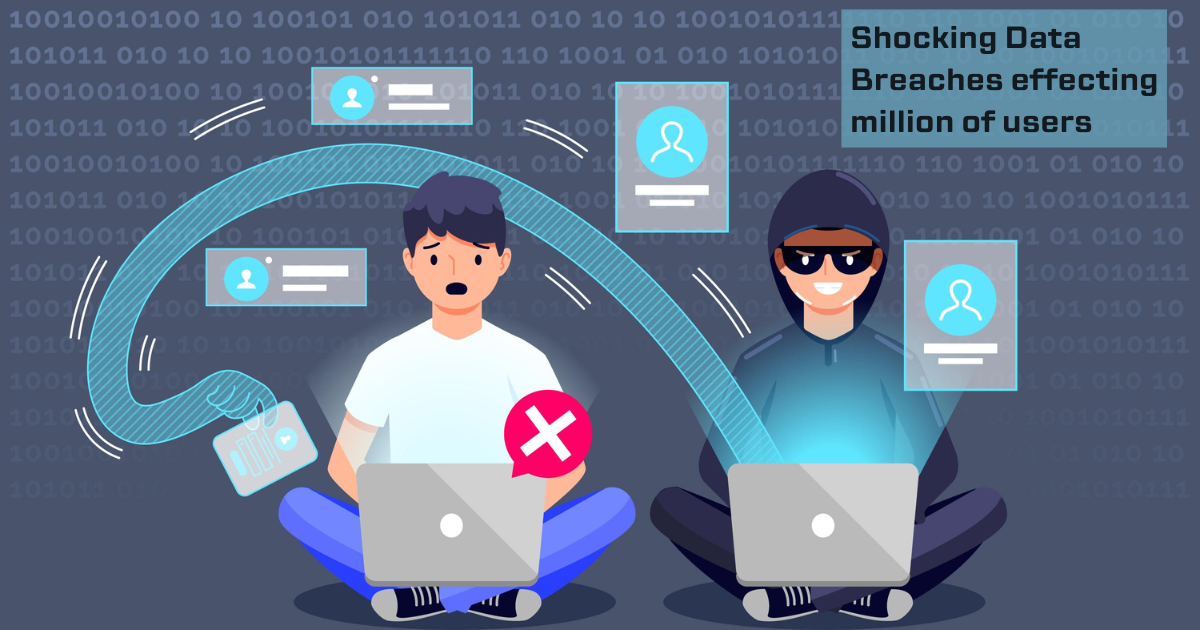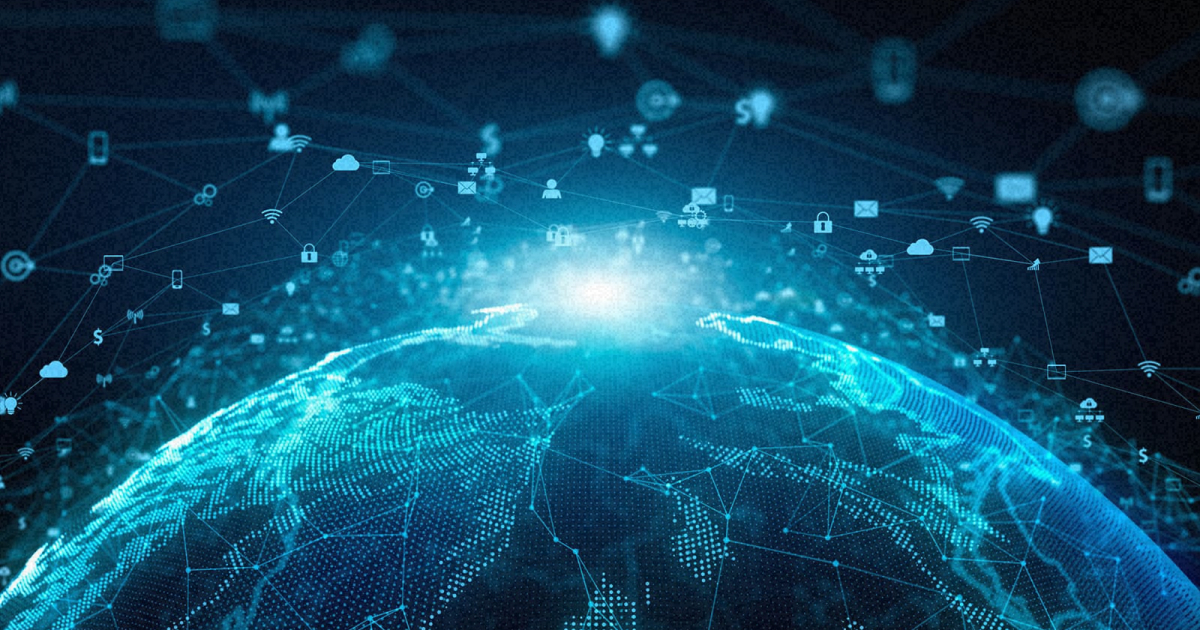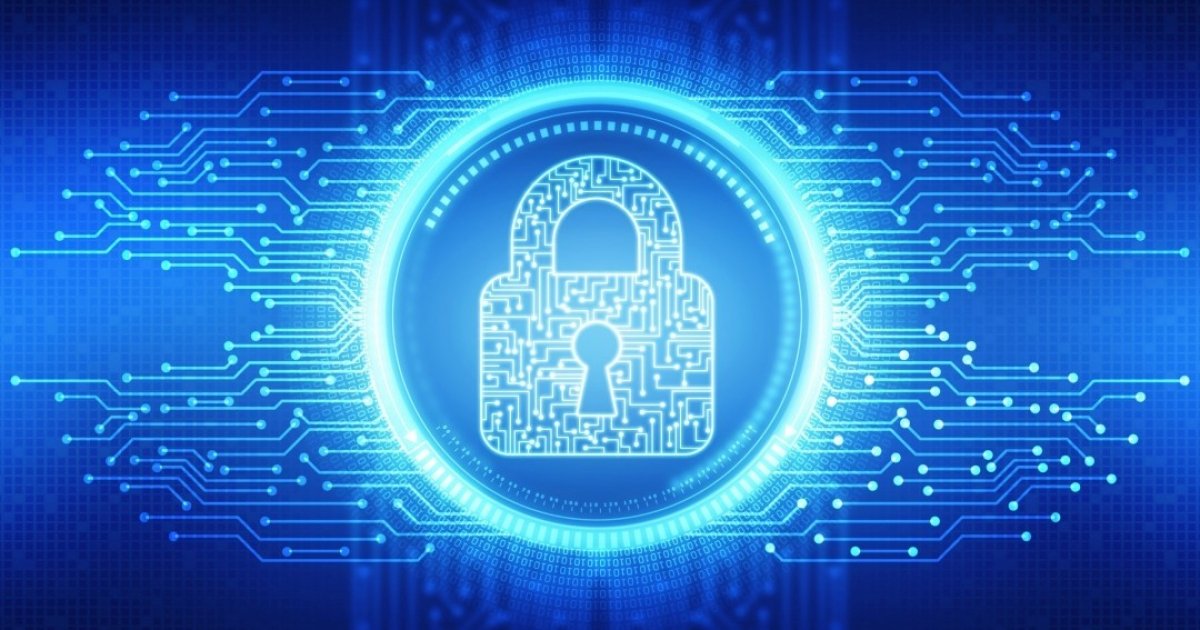Navigating the Cyber Threat Landscape: Insights into Emerging Risks and Protective Measures
In a world where the boundaries between the physical and digital realms continue to blur, we find ourselves at the dawn of the Digital Frontier. This expansive terrain is not just a space of endless possibilities; it’s also a landscape fraught with unseen dangers. As we delve deeper into the interconnected fabric of technology, we must navigate through the vast expanse of data, networks, and devices that define the digital era.
The Pervasiveness of Cyber Threats
In this digital age, the pervasiveness of cyber threats is undeniable. No corner of the internet is immune, and the reach of cyber attacks extends across individuals, businesses, and even governments. From data breaches and identity theft to sophisticated cyber espionage, the breadth of cyber threats underscores the critical need for a comprehensive and robust cybersecurity posture.
Understanding the Need for Vigilance
As we embark on this exploration of the cyber threat landscape, understanding the imperative of vigilance becomes paramount. The digital frontier is not a static space; it’s a dynamic environment where threats evolve, adapt, and manifest in novel ways. To navigate this landscape successfully, organizations and individuals alike must cultivate a heightened sense of awareness and a proactive commitment to cybersecurity.
The Evolving Nature of Cyber Threats

Rise of Sophisticated Cyber Attacks
In the ever-evolving battle between defenders and adversaries, cyber attacks have become increasingly sophisticated. Attackers leverage advanced techniques, exploiting vulnerabilities with precision and stealth. Understanding the escalation in the complexity of these attacks is crucial for developing effective countermeasures.
Exploring Advanced Persistent Threats (APTs)
At the forefront of sophisticated cyber threats are Advanced Persistent Threats (APTs). These prolonged and targeted attacks aim to infiltrate networks, often remaining undetected for extended periods. Exploring the nuances of APTs unveils the strategic and persistent nature of these threats, emphasizing the need for advanced detection mechanisms.
The Menace of Ransomware
Among the myriad threats, ransomware stands out as a particularly menacing adversary. This form of malicious software encrypts critical data, rendering it inaccessible until a ransom is paid. Delving into the mechanics of ransomware reveals the disruptive potential and financial motivations that make it a pressing concern in the cybersecurity landscape.
Emerging Risks in the Cyber Space

Social Engineering: Unmasking Digital Manipulation
As technology advances, cyber threats extend beyond technical exploits to exploit a fundamental human vulnerability: trust. Social engineering, a deceptive manipulation of individuals, is a rising concern. Unmasking the intricacies of digital manipulation sheds light on the need for heightened awareness and critical thinking in the face of such tactics.
Phishing: A Closer Look
A prominent facet of social engineering, phishing employs deceptive messages to trick individuals into divulging sensitive information. Examining the anatomy of phishing attacks provides insights into the psychology behind these manipulative schemes, empowering individuals to recognize and thwart such threats.
Deceptive Tactics in Social Engineering
Beyond phishing, social engineering encompasses an array of deceptive tactics. From pretexting to baiting, exploring the diverse methods employed by cybercriminals offers a comprehensive understanding of digital manipulation, aiding in the development of effective countermeasures.
Internet of Things (IoT) Vulnerabilities
The proliferation of IoT devices introduces new dimensions to cyber risks. From smart thermostats to industrial sensors, these devices serve as potential entry points for malicious actors. Scrutinizing the vulnerabilities within the IoT landscape is essential for building defenses against this expanding frontier.
Smart Devices as Entry Points
IoT devices, while enhancing convenience, also present security challenges. Understanding how these smart devices can be exploited as entry points elucidates the need for robust security measures to safeguard the interconnected web of the IoT.
Security Challenges in the IoT Era
The complexity of securing the IoT landscape amplifies as the number of connected devices grows. Investigating the unique security challenges within the IoT era prompts organizations to adopt proactive measures, ensuring the integrity of their interconnected systems.
Cloud Security Concerns
The migration to cloud computing brings forth a paradigm shift in how data is stored and processed. However, this shift also introduces new security considerations. Understanding the shared responsibility model and effective strategies for mitigating cloud-based threats is paramount in harnessing the benefits of cloud technology securely.
Shared Responsibility Model
In the cloud environment, the responsibility for security is a shared endeavor between the service provider and the user. Unpacking the nuances of the shared responsibility model clarifies the roles and responsibilities, laying the foundation for a secure cloud infrastructure.
Mitigating Cloud-based Threats
As organizations transition to the cloud, they must proactively address the specific threats associated with cloud environments. This section provides actionable insights into identifying and mitigating potential risks, ensuring a secure and resilient cloud infrastructure.
Insider Threats

Recognizing the Threat Within
While external threats often dominate discussions, the danger from within an organization should not be underestimated. Insider threats, whether intentional or unintentional, pose a significant risk. Recognizing the signs and understanding the motivations of insider threats is pivotal for comprehensive cybersecurity.
Motivations and Warning Signs
Insiders may harbor various motivations, from financial gain to disgruntlement. Identifying these motivations and recognizing warning signs empowers organizations to address potential insider threats before they escalate.
Strategies for Insider Threat Prevention
Preventing insider threats demands a multifaceted approach. This section outlines strategies, including employee education, access controls, and behavioral monitoring, to mitigate the risk of insider threats effectively.
Cybersecurity Regulations and Compliance
The Regulatory Landscape
In response to the escalating cyber threats, governments and regulatory bodies have enacted cybersecurity regulations. Navigating this regulatory landscape is not merely a compliance necessity; it’s a strategic imperative for organizations aiming to fortify their defenses and protect sensitive data.
Compliance as a Shield Against Cyber Threats
Compliance with cybersecurity regulations is not just about avoiding penalties; it acts as a shield against potential threats. This section elucidates how compliance measures contribute to an organization’s overall cybersecurity posture, fortifying it against a variety of threats.
Navigating Global and Industry-specific Standards
In our interconnected global economy, organizations must navigate both global and industry-specific cybersecurity standards. This part explores the challenges and benefits of adhering to diverse standards, ensuring a robust and adaptable cybersecurity framework.
The Role of Artificial Intelligence in Cybersecurity

AI-Powered Threat Detection
Artificial Intelligence (AI) has emerged as a game-changer in cybersecurity, particularly in threat detection. This section delves into how AI-powered solutions analyze vast datasets, identifying patterns, anomalies, and potential threats with unparalleled speed and accuracy.
Automation in Incident Response
Beyond detection, AI plays a pivotal role in automating incident response. This subsection explores the transformative impact of AI in streamlining response processes, reducing response times, and minimizing the impact of cyber incidents.
Ethical Considerations in AI-driven Security
As AI becomes increasingly integrated into cybersecurity, ethical considerations come to the forefront. Delving into the ethical dimensions of AI-driven security ensures responsible and fair deployment of these technologies in safeguarding digital assets.
Cyber Hygiene Best Practices
Password Management: Beyond 123456
The humble password remains a critical aspect of cybersecurity. However, weak and easily guessable passwords pose a significant risk. This section emphasizes the importance of robust password management practices, urging individuals and organizations to move beyond predictable combinations.
Software Updates and Patch Management
Outdated software is a vulnerability waiting to be exploited. This part underscores the significance of regular software updates and effective patch management to eliminate potential security loopholes and enhance overall cybersecurity.
Secure Communication Practices
In the interconnected digital landscape, communication channels are potential avenues for cyber threats. This subsection explores best practices for securing digital communication, from encrypted emails to secure messaging platforms, ensuring the confidentiality of sensitive information.
Incident Response and Cyber Resilience

Building a Robust Incident Response Plan
Preparing for the inevitability of a cyber incident requires a well-defined and robust incident response plan. This section guides organizations through the essential steps, from detection to recovery, ensuring a swift and effective response.
Cyber Resilience: Beyond Recovery
Cyber resilience extends beyond mere incident recovery; it encompasses an organization’s ability to adapt and continue operations during and after an incident. This subsection delves into the principles of cyber resilience, advocating for a proactive approach to cybersecurity.
Learning from Past Incidents
Every cyber incident provides invaluable lessons. Analyzing and learning from past incidents is not just a post-mortem exercise but a proactive measure to refine incident response plans and fortify cybersecurity measures.
Cybersecurity Training and Awareness
Empowering the Human Firewall
In the digital realm, employees are the first line of defense. Empowering them as the human firewall involves comprehensive cybersecurity training and awareness programs. This section explores how investing in the knowledge and awareness of personnel contributes to a robust cybersecurity posture.
Continuous Education on Cyber Threats
The cybersecurity landscape is dynamic, with threats evolving continuously. This subsection underscores the importance of ongoing cybersecurity training to keep personnel informed about the latest threats and mitigation strategies, turning them into vigilant guardians of digital assets.
Simulated Attacks for Real-World Preparedness
Simulated cyber attacks provide a hands-on approach to preparedness. By conducting simulated attacks, organizations can assess their defenses, identify weaknesses, and enhance real-world preparedness for potential cyber threats.
Collaboration in the Cybersecurity Ecosystem
Public-Private Partnerships
Cybersecurity is not solely the responsibility of individual organizations; it requires a collaborative effort. Exploring the synergy between public and private entities establishes a united front against cyber threats, creating a collective defense mechanism.
Information Sharing Initiatives
Rapid identification of threats requires swift information sharing. This subsection delves into the importance of collaborative initiatives where organizations share threat intelligence, enabling a proactive defense against emerging risks.
Collective Defense Against Cyber Threats
A united front against cyber threats is more potent than individual efforts. This part explores the concept of collective defense, where organizations join forces to create a formidable barrier against the ever-evolving cyber threat landscape.
Threat Intelligence: A Proactive Approach
Harnessing Threat Intelligence
Threat intelligence provides crucial insights into potential cyber threats. This section explores the sources and types of threat intelligence, highlighting its role in proactive cybersecurity strategies.
Understanding Indicators of Compromise (IoCs)
Indicators of Compromise (IoCs) serve as breadcrumbs in the digital realm, signaling potential security incidents. Understanding IoCs is essential for swift threat detection and effective response, enabling organizations to stay ahead of cyber adversaries.
Integrating Threat Intelligence into Security Strategies
The true efficacy of threat intelligence is realized when seamlessly integrated into an organization’s security strategy. This part provides guidance on incorporating threat intelligence into daily security practices, creating a proactive defense posture.
Future Trends in Cybersecurity
Quantum Computing and Encryption Challenges
The advent of quantum computing brings both promise and challenges to cybersecurity. This section explores the potential impact of quantum computing on encryption methods and the imperative for developing quantum-resistant cryptographic solutions.
The Role of Blockchain in Cybersecurity
Beyond its association with cryptocurrencies, blockchain technology has broader implications for cybersecurity. This subsection delves into the decentralized and tamper-resistant nature of blockchain, exploring its potential applications in fortifying digital security.
Predictive Analytics in Threat Prevention
Predictive analytics leverages data patterns to foresee potential threats before they materialize. This section explores how organizations can harness predictive analytics to anticipate and prevent cyber threats, ushering in a new era of proactive cybersecurity.
Ethical Hacking and Penetration Testing
The Art of Ethical Hacking
Ethical hacking, an authorized testing method to identify vulnerabilities, has become an integral part of cybersecurity. This section explores the art of ethical hacking, highlighting the importance of skilled professionals in proactively identifying and fixing security flaws.
Importance of Regular Penetration Testing
Regular penetration testing goes hand in hand with ethical hacking, providing organizations with a realistic assessment of their security posture. This part emphasizes the ongoing nature of penetration testing for continuous improvement in cybersecurity.
Red Team vs. Blue Team: A Constant Battle
The dynamic interplay between red teams (attackers) and blue teams (defenders) simulates the perpetual battle in the cybersecurity landscape. This subsection explores how organizations can benefit from fostering this internal conflict for continual improvement in their security measures.
Cyber Insurance: Navigating Risk Mitigation

Understanding Cyber Insurance
As cyber threats escalate, organizations are increasingly turning to cyber insurance as a proactive risk management strategy. This section provides insights into the fundamentals of cyber insurance, covering what it entails and how organizations can leverage it to mitigate financial risks associated with cyber threats.
Evaluating Coverage Options
Choosing the right cyber insurance coverage is a strategic decision. This part explores the factors organizations should consider when evaluating coverage options, ensuring alignment with their specific cybersecurity needs and potential risks.
Making Informed Decisions for Risk Mitigation
While cyber insurance provides financial protection, informed decision-making is crucial. This section guides organizations in making informed decisions, balancing the benefits of insurance with proactive risk mitigation strategies to create a comprehensive defense strategy.
Securing Remote Work Environments
The Rise of Remote Work and Cybersecurity Implications
The global shift towards remote work introduces new dynamics and challenges to cybersecurity. This section explores the implications of the rise of remote work and the need for adaptive security measures in this evolving landscape.
Best Practices for Securing Remote Access
With the decentralization of the workforce, securing remote access becomes paramount. This part outlines best practices for organizations to ensure secure remote access, preventing unauthorized entry points for cyber threats and safeguarding sensitive data.
Balancing Productivity and Security
Finding the delicate balance between productivity and security is a constant challenge in remote work environments. This section offers insights into strategies for organizations to maintain productivity while upholding robust cybersecurity measures, ensuring a harmonious integration of digital workspaces.
Building a Cybersecurity Culture
Fostering a Culture of Security
A robust cybersecurity posture extends beyond technical measures; it requires fostering a culture of security within an organization. This section explores the elements of building and nurturing a cybersecurity-centric culture, where security is ingrained in the organizational DNA.
Leadership’s Role in Shaping Cybersecurity Values
Leadership plays a pivotal role in shaping organizational values. This part discusses how leaders can actively contribute to establishing a cybersecurity-centric culture, instilling a sense of responsibility and awareness among team members at all levels.
Employee Engagement and Responsibility
Every employee is a stakeholder in the cybersecurity posture of an organization. This section delves into how employee engagement and a sense of responsibility are vital components of a resilient cybersecurity culture, creating a workforce that actively participates in safeguarding digital assets.
The Dark Web: Unveiling the Hidden Threats

Exploring the Depths of the Dark Web
Beneath the surface of the visible internet lies the clandestine realm of the dark web. This section delves into the mysterious world of the dark web, uncovering the hidden threats that pose risks to individuals and organizations alike.
Illicit Activities and Cybercrime Marketplaces
The dark web serves as a marketplace for various illicit activities, from the sale of stolen data to cybercrime services for hire. This part provides insights into the types of cybercrime marketplaces that thrive in the shadows, highlighting the diverse range of threats originating from this hidden corner.
Law Enforcement Efforts Against Dark Web Activities
Governments and law enforcement agencies are actively combating dark web activities. This section explores the ongoing efforts to curtail illegal operations on the dark web, shedding light on the challenges and successes in this continuous battle to protect the digital realm.
International Cybersecurity Collaboration
Cross-Border Cyber Threats
Cyber threats recognize no borders, necessitating international collaboration to address the challenges they present. This section examines the nature of cross-border cyber threats and underscores the importance of collaborative efforts to create a unified front against cybercriminals.
Global Efforts for Cybersecurity Cooperation
Various global organizations and initiatives contribute to international cybersecurity cooperation. This part explores the role of collaborative efforts in sharing threat intelligence, disseminating best practices, and fostering a united front against the ever-evolving landscape of cyber threats.
The Role of International Treaties and Agreements
International treaties and agreements play a crucial role in establishing norms for responsible state behavior in cyberspace. This section discusses the significance of these agreements in promoting a safer and more secure digital environment on a global scale.
Cybersecurity for Small and Medium-sized Enterprises (SMEs)
Unique Challenges for SMEs
Small and medium-sized enterprises (SMEs) face distinct challenges in cybersecurity, often due to limited resources. This section explores the specific vulnerabilities and limitations that SMEs encounter and offers tailored strategies for building effective cybersecurity measures within budgetary constraints.
Cost-effective Security Solutions
Budget constraints often limit the cybersecurity options for SMEs. This part provides insights into cost-effective security solutions, enabling smaller enterprises to fortify their defenses without compromising financial stability.
Building Resilience on a Limited Budget
Resilience is key for SMEs with limited resources. This section guides SMEs in building cybersecurity resilience on a tight budget, emphasizing practical measures to enhance security without breaking the bank.
Conclusion
Staying Ahead in the Cyber Arms Race
As we traverse the dynamic landscape of cyber threats, staying ahead in the cyber arms race demands constant adaptation and a proactive mindset. This section summarizes key takeaways, emphasizing the need for a holistic approach to cybersecurity that addresses technological, human, and organizational aspects.
The Collective Responsibility in Securing the Digital Future
In conclusion, securing the digital future is not the responsibility of a single entity; it’s a collective effort. This part underscores the importance of collaboration, ongoing education, and a shared commitment to cybersecurity in creating a resilient and secure digital environment for all.
FAQ – Navigating the Cyber Threat Landscape: Insights into Emerging Risks and Protective Measures
What is the significance of navigating the cyber threat landscape?
Navigating the cyber threat landscape is crucial as it helps individuals and organizations understand the evolving digital frontier, where pervasive cyber threats demand vigilance and proactive cybersecurity measures.
Why should we be concerned about the evolving nature of cyber threats?
The evolving nature of cyber threats, including sophisticated cyber attacks, Advanced Persistent Threats (APTs), and the menace of ransomware, underscores the need for a comprehensive understanding to develop effective countermeasures.
What are some emerging risks in the cyber space?
Emerging risks include social engineering tactics like phishing, IoT vulnerabilities, and concerns related to cloud security. Understanding these risks is essential for building robust defenses.
How can organizations address insider threats effectively?
Recognizing the threat within and understanding the motivations and warning signs of insider threats are key. Implementing strategies for insider threat prevention, such as employee education and access controls, is crucial.
What role do cybersecurity regulations play in protecting against threats?
Cybersecurity regulations act as a shield against threats by providing a framework for compliance. Navigating global and industry-specific standards helps organizations fortify their cybersecurity posture.
How does Artificial Intelligence contribute to cybersecurity?
AI plays a pivotal role in threat detection and incident response through its ability to analyze vast datasets. Understanding the ethical considerations in AI-driven security ensures responsible deployment.
What are some best practices for cyber hygiene?
Cyber hygiene best practices include robust password management, regular software updates, and secure communication practices. Adhering to these practices enhances overall cybersecurity.
Why is incident response and cyber resilience essential?
Building a robust incident response plan and focusing on cyber resilience ensures organizations can effectively respond to and recover from cyber incidents, learning valuable lessons for future readiness.
How can organizations empower their human firewall?
Empowering the human firewall involves continuous education on cyber threats and conducting simulated attacks for real-world preparedness. This ensures personnel are vigilant guardians of digital assets.
Why is collaboration important in the cybersecurity ecosystem?
Collaboration, through public-private partnerships and information sharing initiatives, strengthens the collective defense against cyber threats, creating a more resilient cybersecurity ecosystem.
What is the role of threat intelligence in proactive cybersecurity?
Threat intelligence provides insights into potential cyber threats, understanding indicators of compromise (IoCs), and integrating threat intelligence into security strategies ensures a proactive defense posture.
What are some future trends in cybersecurity?
Future trends include challenges posed by quantum computing, the role of blockchain in cybersecurity, and the use of predictive analytics in threat prevention.
Why is ethical hacking and penetration testing important?
Ethical hacking identifies vulnerabilities, and regular penetration testing provides a realistic assessment of an organization’s security posture. This continual improvement is vital for cybersecurity.
How does cyber insurance contribute to risk mitigation?
Cyber insurance is a proactive risk management strategy that provides financial protection. Evaluating coverage options and making informed decisions ensures a comprehensive defense strategy.
What are the cybersecurity implications of remote work environments?
Securing remote work environments requires best practices for securing remote access and balancing productivity with security, ensuring a harmonious integration of digital workspaces.
Why is building a cybersecurity culture important?
Fostering a culture of security, with leadership’s active role, ensures every employee is engaged and takes responsibility, creating a resilient cybersecurity culture within an organization.
What are the hidden threats associated with the Dark Web?
The Dark Web harbors illicit activities and cybercrime marketplaces. Understanding law enforcement efforts against Dark Web activities sheds light on the ongoing battle against hidden threats.
How does international cybersecurity collaboration address cross-border threats?
Cross-border cyber threats necessitate international collaboration. Global efforts, facilitated by treaties and agreements, contribute to a united front against cybercriminals.
What are the unique challenges faced by SMEs in cybersecurity?
SMEs face distinct challenges due to limited resources. Exploring cost-effective security solutions and building resilience on a limited budget are vital for effective cybersecurity.
What is the collective responsibility in securing the digital future?
Securing the digital future is a collective responsibility. Collaboration, ongoing education, and a shared commitment to cybersecurity create a resilient and secure digital environment for all.
Stay Tuned On Our Content
Dear Readers,
As we journey through the intricate realm of cybersecurity, there’s a wealth of knowledge awaiting exploration. Delve deeper into the nuances of cyber defense by exploring our latest post, Social Engineering Awareness: Recognizing and Defending Against Cyber Attacks. Unveil the deceptive tactics employed by cybercriminals and empower yourself with strategies to fortify your digital defenses.
Internally, our commitment to delivering insightful content extends beyond the surface. We strive to equip you with the tools and knowledge needed to navigate the ever-evolving cyber threat landscape effectively. By delving into the depths of social engineering awareness, you’ll gain invaluable insights into safeguarding your digital assets and thwarting malicious cyber attacks.
Externally, we invite you to broaden your horizons with Navigating the Cybersecurity Landscape: Emerging Threats and Innovative Solutions for 2024. Explore innovative solutions and stay abreast of emerging threats as we navigate the dynamic cybersecurity landscape together.
Embark on this journey with us as we unravel the complexities of cybersecurity and empower ourselves with knowledge. Stay tuned for more insightful content, and let’s continue to navigate the digital frontier with confidence.
Best Regards,
Leep Team
[email protected]




One Response